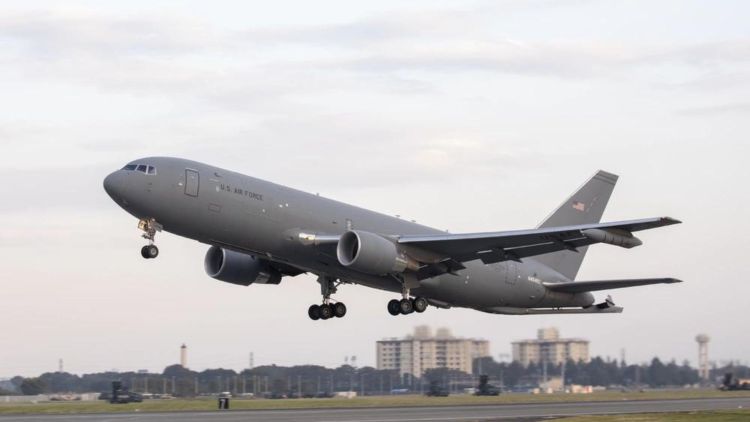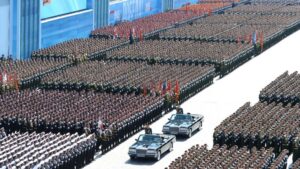The Air Force has struck a deal with Boeing to build the first rapid prototype E-7 battle management aircraft, according to Air Force Secretary Frank Kendall. This announcement came over the weekend at the Royal International Air Tattoo air show.
While the exact terms of the contract are still being finalized, Kendall expects them to be settled by next month. This agreement marks the end of months of complex negotiations between the Air Force and Boeing. This is also driven by the Air Force’s unique requirements for its version of the E-7.
Replacing the E-3 Sentry
In 2022, the Air Force selected the E-7 to replace its aging fleet of E-3 Sentry airborne warning and control system (AWACS) aircraft. The plan is to purchase 26 E-7s from Boeing by 2032. In February 2023, the Air Force awarded Boeing a $1.2 billion contract to begin this process.
A U.S. Air Force KC-135 Statotanker assigned to the Iowa Air National Guard’s 185th Air Refueling Wing in Sioux City, Iowa takes off from the Sioux City airport. (Senior Master Sgt. Vincent De Groot 185th ARW PA / DVIDS)
Ultimately, the Air Force aims to use a combination of E-7s and space-based satellites to monitor battlefields and airspace, providing command and control and targeting enemy forces. Until the E-7 fleet is fully operational, the Air Force will continue using some AWACS to bridge the gap.
Modifications for the U.S. E-7
While Australia already operates the E-7, known as the Wedgetail, and Boeing has deals in progress with the U.K. and other nations, the U.S. version needs specific modifications. These include U.S. satellite communication, military GPS, and cybersecurity requirements.
Andrew Hunter, the Air Force’s acquisition chief, explained in February that the Air Force initially believed the E-7 they were purchasing would be similar to the U.K.’s version. However, U.S. requirements demanded a much greater level of one-time engineering than anticipated, increasing the potential cost and complicating the negotiations.
Challenging Negotiations
Kendall acknowledged the difficulties in these negotiations, saying:
“There are some reasons for the price to go up, but the degree to which it was going to go up originally was unacceptable.”
Despite moving towards space-based capabilities for intelligence, surveillance, reconnaissance, and targeting, Kendall emphasized the need for the E-7 as an airborne component in the near future.
Kendall added:
“Having some redundancy and getting to a place where we have more confidence in the space layer is going to take some time. There’s some good technical reasons to have a mix of capabilities here. I think we’re going to need the E-7, and I’d like to keep it funded.”
Expert Negotiation and Future Market
To finalize the deal, the Air Force brought in Shay Assad, the Pentagon’s former director of defense pricing. According to Kendall, Assad played a crucial role in reaching a “reasonable price point” for the E-7.
An Airman with the 374th Maintenance Squadron transient alert marshals a Boeing KC-46A Pegasus at Yokota Air Base, Japan. (U.S. Air Force photo by Yasuo Osakabe / DVIDS)
Hunter also praised Assad’s efforts and credited Boeing and its suppliers with reducing costs. “They did really buckle down and get their pencils out and sharpen them to bring the cost of the rapid prototyping program down,” Hunter said.
Looking Ahead
These improvements are expected to benefit Boeing in the long run. There is significant interest in the E-7 among NATO nations and other partners.
“The business case was there for them,” Hunter noted. “There are some critical design updates on the overall structure of the mission systems that will lay the foundation for the capability going forward. That’s a big market for the industry.”
This agreement signifies a crucial step forward for the Air Force’s modernization efforts, ensuring that they maintain an effective airborne component while transitioning to more advanced, space-based capabilities.
__
Disclaimer: SOFREP utilizes AI for image generation and article research. Occasionally, it’s like handing a chimpanzee the keys to your liquor cabinet. It’s not always perfect and if a mistake is made, we own up to it full stop. In a world where information comes at us in tidal waves, it is an important tool that helps us sift through the brass for live rounds.



